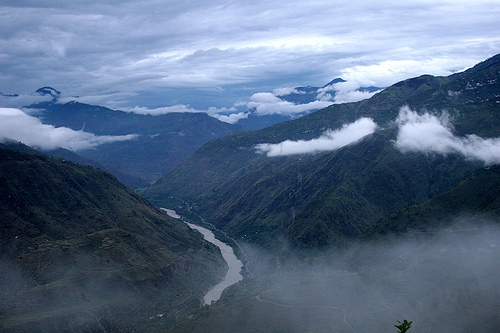Shimla: Himachal Pradesh is rated to be the third fastest growing economy in India that by per capita incomes is ranked 4th amongst all the Indian states, research by MW Analytic Services, an online financial and economic intelligence firm reveals.
The genesis of this development lies in the numerous hydro projects that have generated millions for the state and helped eradicate the various economic hurdles it faced for years such as poverty and unemployment.
Himachal Pradesh, the Himalayan state in north India, is highly dependent on three major resources i.e., Hydroelectric power, tourism and agriculture.

The state is extremely rich in natural resources and it acts as the dominant facet to the significant growth in the state’s economy. However, some locals fear that industrial progress in the state is being done at the cost of the environment.
In the last few years, the flow of investment into industrial sector in Himachal has accelerated to great heights with a total investment of about Rs 16,588.56 crore as indicated in the Economic Survey of Himachal Pradesh 2013.
Blessed with abundant snow fed perennial rivers and rivulets, the hill state has vast hydro electric potential, estimated at 21,000 MW which is about 25% of the total hydel potential of the country.
With the change in lifestyle and better living conditions of the people, the demand for power has grown tremendously. Himachal has enough potential to not only meet its domestic power requirements but also supply power to the neighbouring states.
With Arunachal Pradesh, another Himalayan state in north east India, having the highest hydro power potential in the country, but is unable to tap it due to various constraints, it is anticipated that Himachal will soon become the highest contributor, generating about 50% of the total hydel potential of the country.
Since power is a vital infrastructure for socio-economic development, the state government has floated a “Hydro-power policy” to boost investment in generation, transmission and distribution. This would accelerate industrial growth and generate new employment opportunities.

Being surplus in power, Himachal is able to export a large amount of power to deficient states such as Punjab, Haryana, Delhi and Uttar-Pradesh, who have to do with frequent power cuts.
Hydropower is coming to be relied upon as a dependent revenues resource by Himachal and is also contributing much to the overall development of the country.
With India having achieved proficiency in tapping hydel energy by constructing large dams and run of the river projects, the country has been able to help other countries in tapping hydro power potential also.
The Himalayan countries of Nepal and Bhutan are increasingly relying on Indian knowhow to tap their vast hydropower potentials.
But all are not happy with the exploitation of hydro potential in the Himalayan regions as more and more locals are voicing concerns about its impact on environment.
Changing river courses or damming them for generating electricity is bound to impact the environment but given the advantages hydropower has over coal or gas fed thermal, which adds immensely to global warming, concerns of locals opposing hydropower need to addressed for the country to tap more of this renewable and clean source of power.
Emphasis on tapping solar or wind power along with hydropower needs to be laid, to reduce the dependence upon fossil fuels for meeting present and future energy needs.
Though there are some negative impacts of hydro projects on the local people as well as the environment but when seen in a larger context, it is beneficial for the country of over 1.2 billion people.
As our population is increasing, so does the demand for power. Unless there is a better and alternative eco-friendly source of power for meeting the current and future energy demands, developing hydro power remains a necessity for developing India.




Its truly ironic that the other key drivers of the Himachal economy – tourism and horticulture/agriculture are going to be adversely impacted by the unregulated cascade of hydropower projects but this is just not being acknolwledged. What better example than Kinnaur. We have disappearing forests, a web of transmission likes, muck dumped all over the river bed, dust in the air and a trickle of Sutlej (with much of it flowing in tunnels). Same will be the case with the Beas and Ravi valley. Which tourist would like to trek these terrains? How will the soil moisture regimes and temperatures required for apple be sustained with such level of constrruction activity? More than 7000 hectares of forest lands have been divered in the last three decades for hydropower and transmission lines alone. The Renuka Dam alone will submerge lakhs of trees. The Luhri dam will dry up the last long stretch of the free flowing Sutlej – and no more rafting at Tatta Pani. Agricultural land which is already limited in the state is being acquired. The farmers affected by the Renuka Dam are marketing Ginger and tomatoes right upto Delhi markets and their livelihoods stand threatened today. The Comptroller Auditor General’s report of 2012 assesses that many of the hydropower projects are not following the minimum discharge of 15% water into the river. What kind of development will we acheieve if we divert every river and stream flowing through the state? Its like axing the very branch that we are perched on…